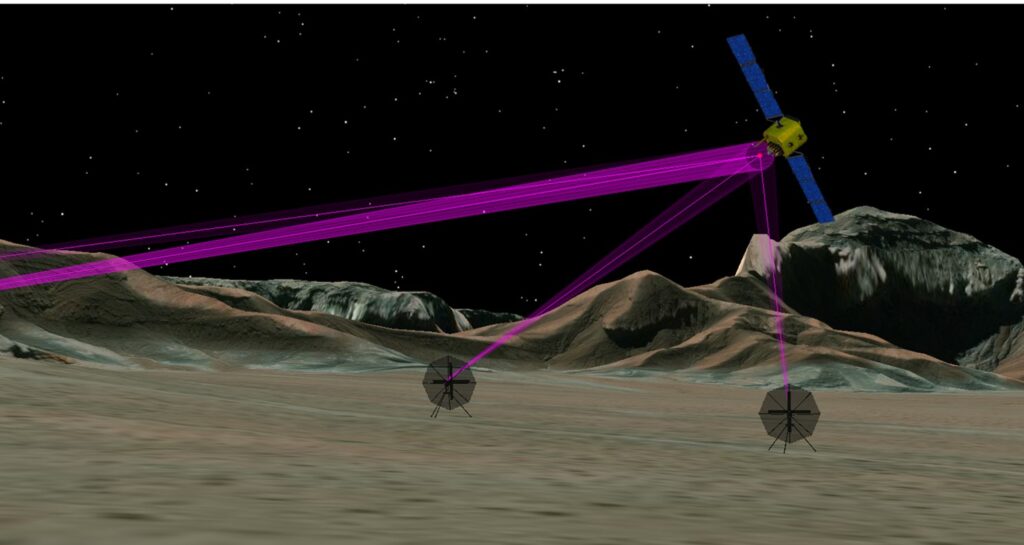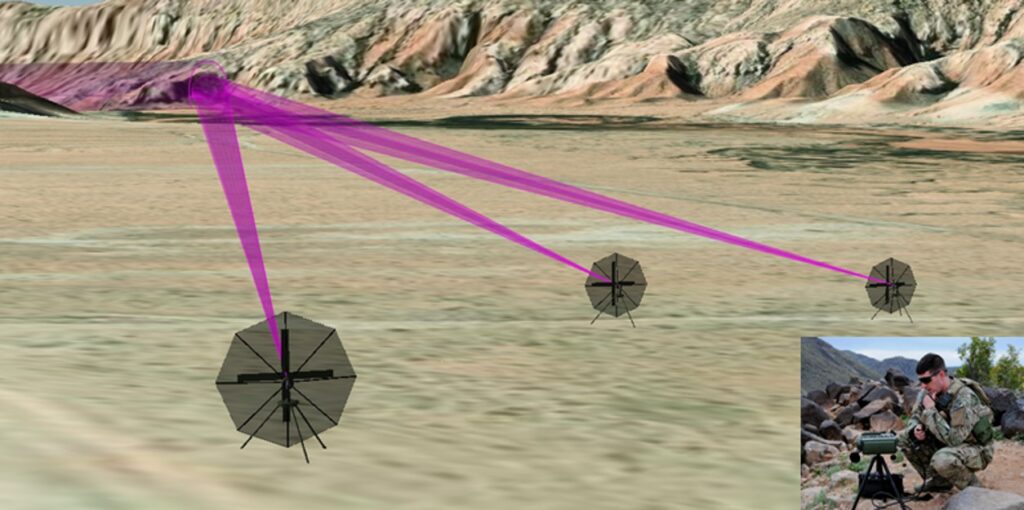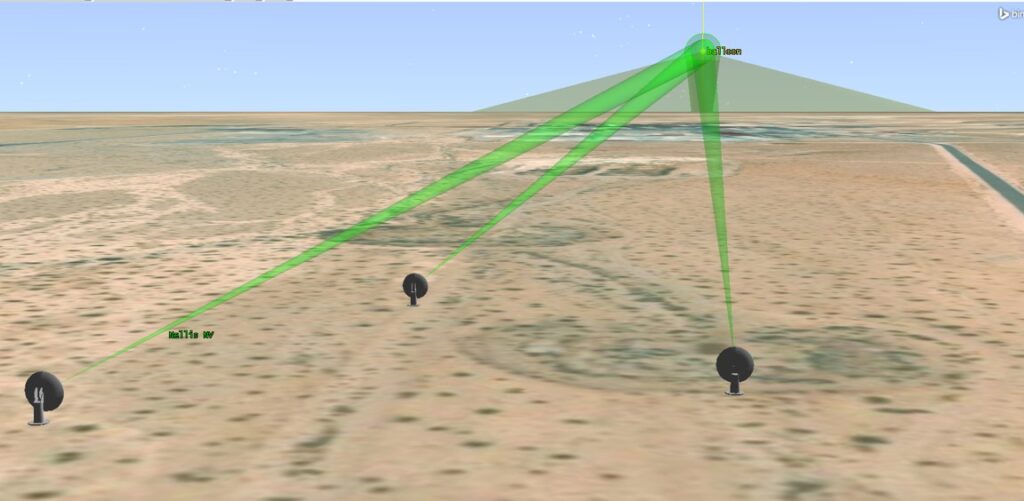Feedback Controlled
A passive or cooperative target is included in the control loop
Our Feedback Controlled Method incorporates a feedback object (passive or active) in the control loop. It was developed for on-the-move cases where fiber and wires cannot be installed between the antennas and for cases where using a single large antenna would not only be impractical but would be an obvious target. One example is resilient communications. Man-portable antennas can be arrayed, ad hoc, for direct communications to a GEO COMSAT. Large, fixed antennas can also be arrayed this way.
Background
Specialized Arrays has invented two distinct methods to keep the antennas in the array synchronized or coherent. The method selected is mission-dependent.
- Feedback-Controlled
- Self-Controlled
Feedback-Controlled calibration was designed for applications, such as quick deployable tactical missions, where installing fixed, stable antennas, connected with fiber and wires is not feasible and where a single large dish would be an easy target.
Self-Controlled calibration is ideal for very large arrays of widely-spaced ground reflectors for both COMM and RADAR missions. We demonstrated both coherent transmit and calibrated receive arraying using this technology in 2010 on a NASA-funded program. It is at a TRL-6.
Description
For quick-deployable, (man portable) antenna arrays, the optimal method is Feed-back Controlled. The system requires either passive or active feedback in the direction of the target.
This method features:
- 24/7 availability
- No need to point away from the target to recalibrate
- No drifting out of phase
- Continuous, autonomous, optimal coherency for the ‘perfect’ beam
- Independent operation of each antenna
- No wiring or fiber needed to connect the antennas
- Additional antennas can join the array
- Large antenna power in hard to reach places
- On-the-move EW, ECM, COMM and DE capabilities
For this method, each sensor works independently, enabling others to be added to the array (expandable) for more power on the target or to transmit further away.
It is useful in applications such as communicating to a GEO COMSAT from an array of small man-portable antennas. Feedback from a GEO SAT can be used to synchronize the antennas because the satellite movement is small despite the range to it being large. Therefore, communication at X-band is feasible since the rate of change of errors is within the control loop bandwidth limited by latency, which is about 3Hz when communicating with a GEO COMSAT.
The feedback can be from a cooperative, uncooperative or non-cooperative target. Therefore, it could even be used for directed energy to a hostile airborne or space object.
Cooperative target mode
Unique non-interfering amplitude and phase information is transmitted from each node to the target. Feedback arrives back at each of the nodes containing wave interference information from all of the nodes. Each node can then independently optimize its contribution to the total transmit EIRP.
It has been mathematically proven that this process is optimum and that it accounts for all intervening phase error contributions, provided that the rate of change of errors is within the loop bandwidth constraint established by two-way link latency.
Uncooperative or non-cooperative target mode
A radar-like method can be used with un- or non-cooperative targets. When an intense beam is formed on a target, some of the power will be reflected. This reflected power can be received by the array nodes and processed by the beamforming algorithm much as in the cooperative mode.
Example

Our Feedback Controlled Method can be used for Quick Deployable missions such as Resilient Communications. Small antennas can be ad-hoc arrayed in rugged environments and autonomously synchronized for long range COMM, such as to a GEO satellite. The antennas are not connected with wire or fiber for quick setup. They act independently, yet form a coherent beam at the target. Feedback from a reflective body such as a defunct satellite or an ordinary downlink signal such as telemetry data is used to coherently combine the signal so that it arrives at the target from each antenna at precisely the same time.

Another example is Over-the-Horizon Communications arraying is a way to get a signal to a ground target from a ground system where no direct line-of-sight exists between the two. It begins with an array of ground antennas coherently sending a signal to an available passive (e.g. as the side of a rock ledge), a cooperative (e.g. a transponder on a Space object) or a non-cooperative (e.g. a satellite). The signal is synchronized and reflected to the target of interest.

